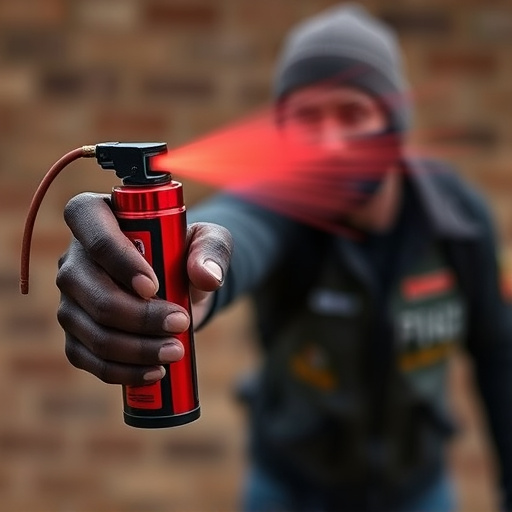Capsaicin, the active ingredient in chili peppers, is an effective deterrent in pepper spray, temporarily disabling attackers by disrupting nerve signals in mucous membranes. Choosing a high-quality, legal pepper spray with optimal concentration (2% to 10% OC) and practicing its application is essential. Mastering best pepper spray self-defense techniques, including targeting face and eyes for close encounters, angling sprays outdoors, and using rapid bursts followed by retreat, enhances personal safety in various scenarios. Regular training sessions solidify skills and prepare for unexpected encounters.
“Discover the power of nature’s defense mechanism with capsicum-based personal protection devices. This article explores how capsaicin, the active ingredient in chili peppers, serves as an effective self-defense tool. We’ll delve into its history, benefits, and design principles for creating your own pepper spray device.
Learn the best pepper spray self-defense techniques tailored to various scenarios, ensuring you’re prepared for unexpected situations. From understanding application methods to mastering defensive moves, this guide equips you with the knowledge to protect yourself confidently.”
- Understanding Capsaicin and Its Efficacy in Self-Defense
- Designing and Using a Pepper Spray Personal Protection Device
- Effective Pepper Spray Self-Defense Techniques for Different Scenarios
Understanding Capsaicin and Its Efficacy in Self-Defense
Capsaicin, the active ingredient in chili peppers, has gained recognition as an effective component in personal protection devices, particularly pepper spray. This natural compound is known for its ability to cause a burning sensation and temporarily disable an attacker, making it a popular choice for self-defense strategies. When used in spray form, capsaicin disrupts the nerve signals in the eyes, nose, and respiratory system, allowing users to gain time and space from potential threats.
The effectiveness of capsaicin in self-defense techniques lies in its rapid onset of action. Upon contact with the target’s mucous membranes, it causes irritation and inflammation, leading to a powerful deterrence effect. Research has shown that pepper spray containing capsaicin can incapacitate an assailant for several minutes, providing users with valuable opportunities to escape or seek help. As a natural and non-lethal option, capsaicin-based devices offer individuals a sense of security and empowerment when facing dangerous situations, making it a top choice among those seeking the best pepper spray self-defense techniques.
Designing and Using a Pepper Spray Personal Protection Device
Designing and using a pepper spray personal protection device involves understanding the best pepper spray self-defense techniques. The first step is selecting a high-quality, legal pepper spray that suits your needs. Factors to consider include spray range, intensity, and capacity. Look for sprays with a reach of 3-4 meters and an OC (oleoresin capsicum) concentration between 2% and 10%, offering a balance between effectivity and safety. Ensure the device is easily accessible and comfortable to carry.
Once you have your pepper spray, familiarizing yourself with its application becomes crucial. Practice aiming at various targets—eyes, nose, mouth, and face—to ensure accurate deployment in stressful situations. Remember, the key to effective self-defense is not just having the spray but knowing how and when to use it. Regular training sessions can help hone your skills, making you ready for any unexpected encounter.
Effective Pepper Spray Self-Defense Techniques for Different Scenarios
When it comes to effective pepper spray self-defense, understanding the best techniques for different scenarios is key. In close quarter encounters, aiming for the face and eyes is crucial; a direct blast can temporarily blind and disable an attacker, providing valuable time to escape. For mid-range situations, spraying towards the chest and underarm areas is recommended, as these spots are less likely to cause permanent damage but still inflict significant discomfort and disorient the assailant.
In outdoor or open spaces, wind direction plays a vital role. Holding the spray can at an angle and pointing it away from yourself allows for maximum coverage while minimizing exposure to the wind-borne irritant. Additionally, practicing proper spraying technique – quick bursts followed by rapid retreat – ensures optimal effectivity without wasting valuable product. These best pepper spray self-defense techniques, when combined with awareness and training, empower individuals to defend themselves confidently in a variety of situations.
Capsaicin-based personal protection devices, such as pepper spray, offer an effective and non-lethal self-defense solution. By understanding capsaicin’s potency and implementing tailored defense techniques, individuals can empower themselves in various scenarios. Incorporating the best pepper spray self-defense techniques into your safety strategy can provide a powerful line of defense while ensuring public safety remains a top priority.
